INTRODUCTION
Late 16th century. Mary Stuart, Queen of Scots, has been forced to abdicate her throne and flee her kingdom after the rebellion of her Scottish nobles. A Catholic, crowned at the age of nine months, she was betrothed to the Dauphin of France and raised from childhood at the French court. At 18, she returned to her native land, following the sudden death of her husband Francis II, having reigned as Queen of France for little more than a year. Unable to exert control over her Protestant nobility and beset by insurrections, plots, and murders, she has sought asylum in England from her cousin, Queen Elizabeth. But her presence in Protestant England is untenable to Elizabeth and her advisors. As a descendant of the Tudor line, the English Catholics see Mary as the rightful heir to Henry VIII’s crown (Elizabeth having been declared illegitimate following the execution for adultery of her mother, Anne Boleyn). An English inquiry into the scandalous murder of Mary’s dissolute second husband, Henry, Lord Darnley, has proved inconclusive as to her complicity in the crime but has served as a pretext to keep the former Queen of Scotland imprisoned for many years.
ACT I
At the Palace of Whitehall in London, the court are celebrating. The Duke of Anjou, brother to the King of France, has sought Queen Elizabeth’s hand in marriage and the glorious alliance of the two kingdoms is eagerly anticipated. Elizabeth is still undecided as to whether she will accept the French proposal. For a long time, her heart has belonged to her favorite, Robert Dudley, Earl of Leicester, but recently she has sensed that his love for her is waning. Talbot, Earl of Shrewsbury and Mary Stuart’s custodian for many years, takes the opportunity to petition the Queen for her cousin’s release. Cecil, Elizabeth’s Secretary of State, argues that Mary presents a constant threat to the stability of England while she remains alive. Elizabeth refuses to be drawn in on the subject of her cousin but privately fears that the Queen of Scots has stolen the love of Leicester from her. In the past, Leicester has been a suitor for Mary’s hand and was dazzled by the young Queen’s beauty when he first met her, long ago in France. Leicester arrives and Elizabeth gives him a ring to convey to the French Ambassador in equivocal acceptance of Anjou’s proposal. His indifferent response fuels her suspicions and she leaves, attended by the court. Alone with Leicester, Talbot secretly hands him a letter and a miniature sent by Mary. Enmeshed in the plots of the English Catholics against Elizabeth, Mary’s life now hangs in the balance. Enraptured by the portrait, Leicester vows to give his aid and support to Talbot’s plans for Mary’s liberation. As Talbot leaves, Elizabeth returns, alone. Suspicious of Talbot, she demands to see the letter in Leicester’s hands. Mary has written to beg Elizabeth for an audience and despite herself, tears spring to Elizabeth’s eyes. Seizing his advantage, Leicester presses the Queen to agree to ride out near Mary’s prison on a hunt and under this pretext engineer a meeting between the two queens. Although mistrustful, Elizabeth agrees to her favorite’s request.
Unexpectedly allowed by Talbot to walk freely in the park outside her prison of Fotheringhay Castle, Mary rejoices, running far ahead of her lady-in-waiting, Hannah Kennedy. Her thoughts turn to times of happiness and liberty in France. The horns of the royal hunt are suddenly heard in the distance. The approaching huntsmen cry out Elizabeth’s name and Mary is struck with fear at the prospect of finally setting eyes on her cousin. Leicester has ridden ahead of the hunt to prepare Mary for the meeting. He urges her to humble herself before Elizabeth and move the Queen to pity. Pledging his love and loyalty, he promises Mary that she may yet be free. He hastens to greet Elizabeth as she arrives with the hunting party. She is agitated and suspicious and Leicester’s solicitude for Mary’s cause rouses her jealousy. Talbot leads Mary forward and the two queens stare into each other’s eyes for the first time. Mary masters her pride and shows deference before Elizabeth but her cousin remains aloof and insulting. She accuses Mary of licentiousness, murder, and treason. The tender words with which Leicester tries to calm Mary serve only to increase Elizabeth’s anger. Insulted beyond endurance, Mary turns on Elizabeth. She denounces her as the illegitimate offspring of a whore, one who’s foot sullies and dishonors the throne of England. Elizabeth orders the guards to seize Mary and drag her back to her prison.
ACT II
Time has passed and Mary has remained incarcerated at Fotheringhay, under ever harsher conditions. The marriage to Anjou is now a faded dream for Elizabeth. Cecil has procured evidence that implicates Mary in a Catholic plot to assassinate Elizabeth, and a warrant for her death lies on the Queen’s desk at the Palace of Whitehall. But Elizabeth is racked with anxiety and fear. If she signs it, she sends an anointed monarch to the scaffold and makes an enemy of all Catholic Europe. Cecil urges her to be strong: her own life could be at stake and all England will applaud her and defend her, if need be. Elizabeth’s indecision ends when Leicester enters the chamber. Quickly and indifferently she signs the warrant and hands it to Cecil. Appalled, Leicester pleads with her to rescind the order and show mercy. Elizabeth commands him to be present as witness to the execution. Leicester tells her that she has sent a sister to her death and leaves.
In her room at Fotheringhay, Mary rails bitterly against her fortune. Suddenly, Cecil and Talbot enter to tell her that she must die in the morning. Cecil offers her the services of a Protestant minister in her final hours. Angrily, she refuses and commands him to leave but asks Talbot to stay. He tells her that Leicester will be present when she dies and tries to comfort her. But Mary is tormented by the ghosts of her past and longs to make the confession to God that Cecil has denied her by refusing the ministrations of a Catholic priest. Her heart is heavy with the bloody memories of her short reign in Scotland, and the deaths of her beloved favorite, David Rizzio, and her husband, Darnley. Gently, Talbot urges her to confess to him. She agrees and begins to unburden her conscience. Finally, she confesses her unwitting acquiescence in the fatal plot of the English Catholic, Sir Anthony Babington, to assassinate Elizabeth. She and Talbot pray together for God’s absolution and Mary calmly prepares for death.
Early next morning, Mary’s faithful servants gather, weeping outside the great hall of Fotheringhay, where Mary will be beheaded. The Queen enters. She asks them not to shed tears, as death comes to liberate her. She gives Hannah a silken handkerchief to bind her eyes when the moment comes and leads the household in a fervent prayer. The shot of a cannon on the ramparts above signals that the time of execution is near and Cecil arrives with guards to conduct Mary into the hall. Elizabeth has sent word that all requests should be granted her in her final moments and Mary asks that Hannah may accompany her to the scaffold. She tells Cecil that she forgives her cousin and prays that her blood will wash away all memory of hatred between them. Leicester suddenly appears, distraught, as more shots of the cannon indicate the time has come. Mary calms him. She is content that she will die with him close at hand. She prays that England may be spared the vengeful wrath of God. Dressed in red, the color of Catholic martyrdom, she ascends the scaffold.
Place: Palace of Westminster, London and Fotheringhay Castle, Northamptonshire, England.
Time: The year 1587.
Act 1
Scene 1: Elisabetta's court at Westminster
The Lords and Ladies of the Court enter after a tournament to honor the French ambassador, who has brought a marriage proposal to Queen Elizabeth from the Dauphin François. They express their joy as Elizabeth enters. She considers the proposal, one which would create an alliance with France, but she is reluctant to give up her freedom and also pardon her cousin Mary Stuart, the former Queen of Scots, whom she has imprisoned because of various plots against her throne (Cavatina: Ahi! quando all'ara scórgemi / "Ah! when at the altar a chaste love from heaven singles me out"). Elizabeth expresses her uncertainty while at the same time, Talbot and the courtiers plead for Mary's life (Cabaletta: Ah! dal Ciel discenda un raggio / "Ah! may some ray descend from heaven").
Just as Elizabeth inquires where Leicester is, he enters and Elizabeth tells him to inform the French ambassador that she will indeed marry François. He betrays no signs of being jealous, and the Queen assumes that she has a rival.
Alone with Leicester, Talbot reveals to him that he has just returned from Fotheringay and gives a letter and a miniature portrait of Mary. Joyously, Leicester recalls his love for Mary (Aria of Leicester, then duet with Talbot: Ah! rimiro il bel sembiante / "Ah! Again I see her beautiful face"). Talbot asks what he intends to do and Leicester swears to try to free her from her imprisonment (Vuò liberarla! Vuò liberarla! / "I want to set her free").
Talbot leaves and, as Leicester is about to do so, Elizabeth enters. Clearly knowing what has gone on between the two men, she questions him, asks about a letter from Mary, and then demands to see it. Reluctantly, Leicester hands it over, noting that Mary has asked for a meeting with her cousin and he pleads with the Queen to agree to do so. Also, upon her questioning, he confesses his love for Mary (Duet of Leicester and Elizabeth: Era d'amor l'immagine / "She was the picture of love"). Told that Elizabeth can join a hunting party on the estates where Mary is imprisoned, she agrees to the meeting, albeit with revenge on her mind (Cabaletta to the duet: Sul crin la rivale la man mi stendea / "Over my head my rival stretched out her hand").
Scene 2: Fotheringay Castle
[In many modern performances this scene is called Act 2, with the final act becoming Act 3. Donizetti scholar William Ashbrook in Grove Dictionary notes that the opera is "in two or three acts".]
Mary reflects on her youth in France with her companion, Anna (Cavatina: Oh nube! che lieve per l'aria ti aggiri / "Oh cloud! that wanders light upon the breeze"). The sounds of a royal hunt are heard and, hearing the hunters cry out that the Queen is close by, Mary expresses her disgust (Cabaletta: Nella pace del mesto reposo / "In the peace of my sad seclusion, she would afflict me with a new terror"). To her surprise, Leicester approaches and warns Mary of Elizabeth's imminent arrival, counseling her to behave humbly towards the Queen, who is then despondent (Duet: Da tutti abbandonata / "Forsaken by everyone… my heart knows no hope"). But assuring Mary that he will do whatever is necessary to obtain her freedom, Leicester leaves her to meet Elizabeth. He then attempts to plead with the Queen for her forbearance.
When Mary is brought in by Talbot, Elizabeth reacts with hostility (È sempre la stessa: superba, orgogliosa / She is always the same, proud, overbearing") and, after each character collectively expresses his or her feelings, Mary approaches and kneels before the Queen (Aria: Morta al mondo, ab! morta al trono / "Dead to the world, and dead to the throne… I come to beg your pardon"). The confrontation soon becomes hostile. Elizabeth accuses Mary of having murdered her husband, Lord Darnley, as well as acts of treason and debauchery, all the while Leicester attempting to calm both sides. Stung by Elizabeth's false accusations, Mary calls her the Figlia impura di Bolena ("Impure daughter of Boleyn") and continues with the final insult: Profanato è il soglio inglese, vil bastarda, dal tuo piè! ("The English throne is sullied, vile bastard, by your foot"). Elizabeth is horrified and demands that the guards take Mary away, declaring "The axe that awaits you will show my revenge". Mary is returned to captivity.
Act 2
Scene 1: A room in Elisabetta's apartments
Cecil enters with the death warrant and attempts to persuade her to sign it. While she hesitates, Elizabeth contemplates the situation (Aria: Quella vita a me funesta / "That life, so threatening to me"). Cecil urges her to sign it "so that every ruler will know how to pardon you for it" and, as she is about to do so, Leicester arrives. Seeing him, Elizabeth exclaims "you are hastening the execution" and signs the death warrant. Leicester pleads for mercy, Elizabeth rejects the plea, and Cecil urges her to remain firm (Trio Deh! per pietà sospendi l'estremo colpo almeno / "Alas! For pity's sake spare the final blow at least"). The confrontation ends with Elizabeth holding firm despite Leicester's accusations of cruelty; she orders him to witness Mary's execution.
Scene 2: Maria's room
Mary contemplates her fate, and that of Leicester also: "I have brought misfortune to all". Talbot and Cecil enter and Cecil tells Mary that he holds her death warrant. After Cecil leaves the room, Talbot informs her that Leicester has been ordered to witness her execution. Beside herself with grief, Mary imagines that the ghost of Lord Darnley is in the room with her, while Talbot offers comfort (Duet: Quando di luce rosea il giorno a me splendea / "While with the light of dawn my life still sparkled"). However, Talbot then presses her about "one more sin": her "unity with" ("uniti eri") Babington, to which she initially responds "Ah! be silent; it was a fatal error", but, when he insists, adds that "dying my heart affirms it."
Scene 3: The courtyard at Fotheringay
People gather at the site of the execution, lamenting that a queen's death will bring shame upon England. Mary enters and says her farewells to the crowd, which includes Talbot, telling them she will be going to a better life. She calls them to a final prayer (Mary, with Chorus: Deh! Tu di un úmile preghiera il suono odi / "Ah! May Thou hear the sound of our humble prayer") and, together, she and the crowd pray for God's mercy. When Cecil arrives to tell her that the time for her execution has come, he informs her that Elizabeth has granted her final wishes, including allowing Anna to accompany her to the scaffold. Then Mary offers a pardon to the queen (Mary, Anna, Talbot, Cecil, chorus: Di un cor che more reca il perdóno / "From a heart that is dying, may pardon be granted"). Leicester comes to bid her farewell. Both are distraught and he expresses outrage. Mary asks him to support her at the hour of her death and protests her innocence once again (Aria: Ah! se un giorno da queste ritorte / "Ah! Though one day from this prison your arm wanted to abduct me, now you lead me to my death"). She is then led to the scaffold.


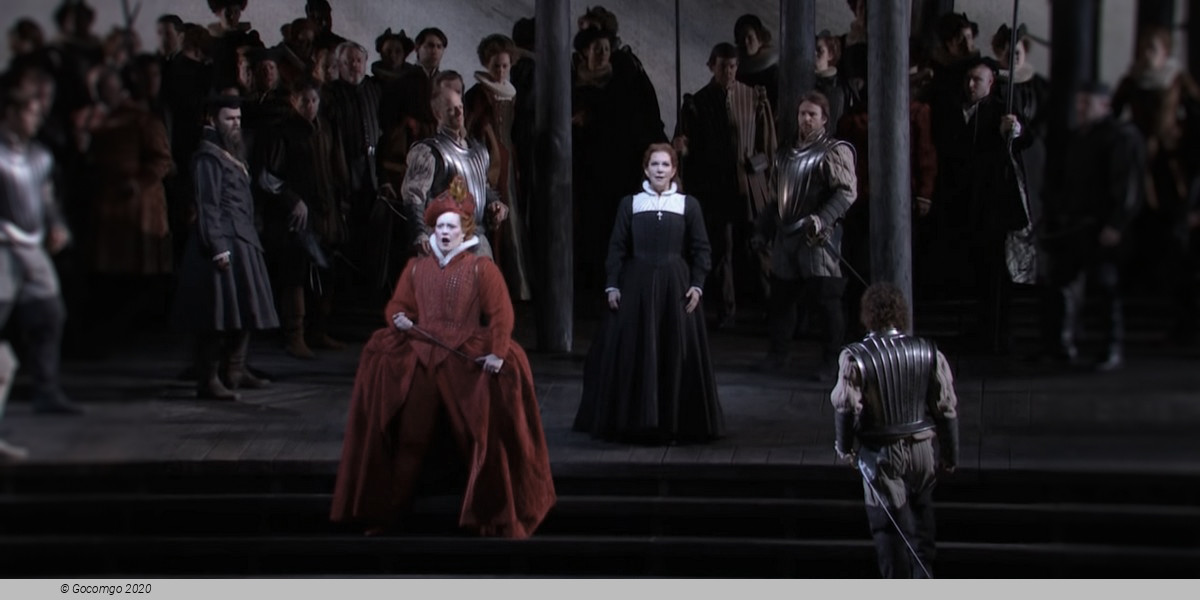
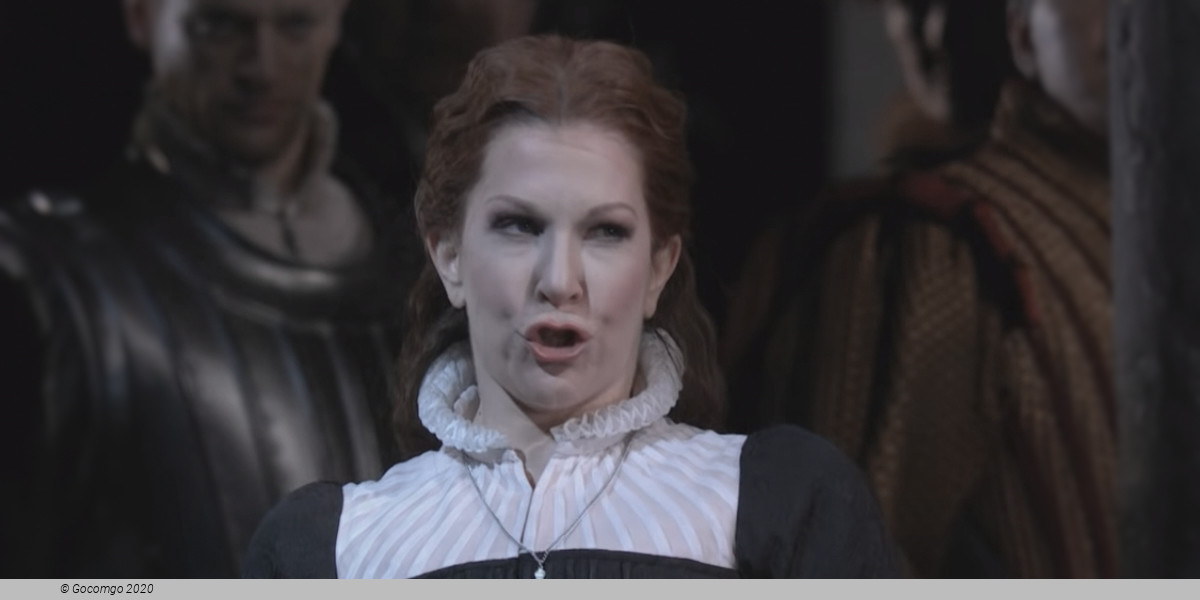
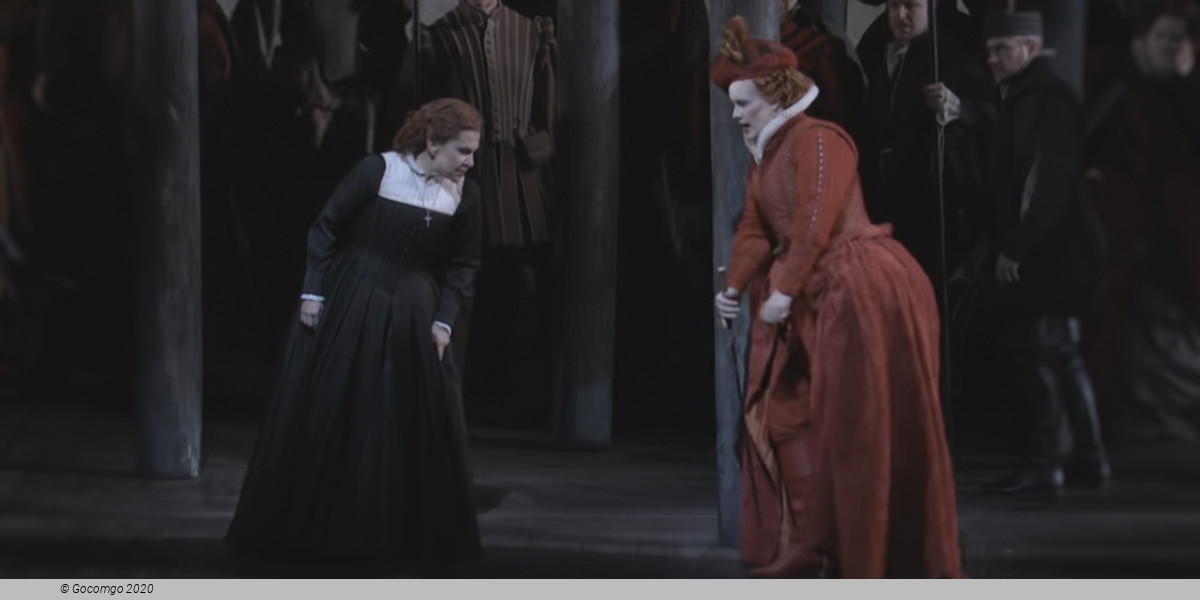
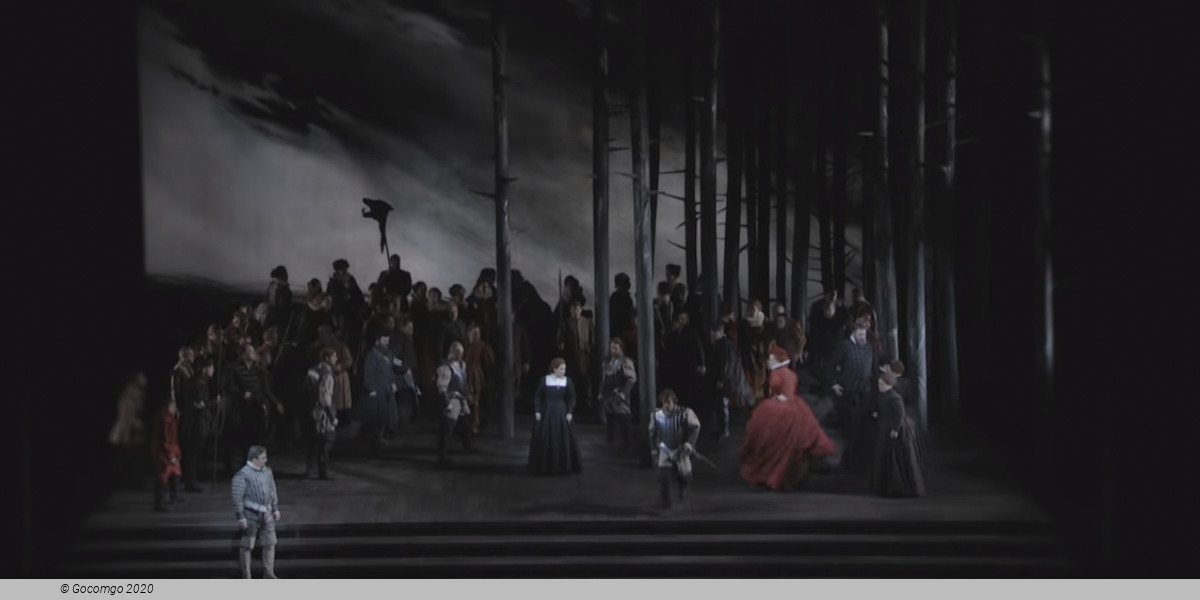
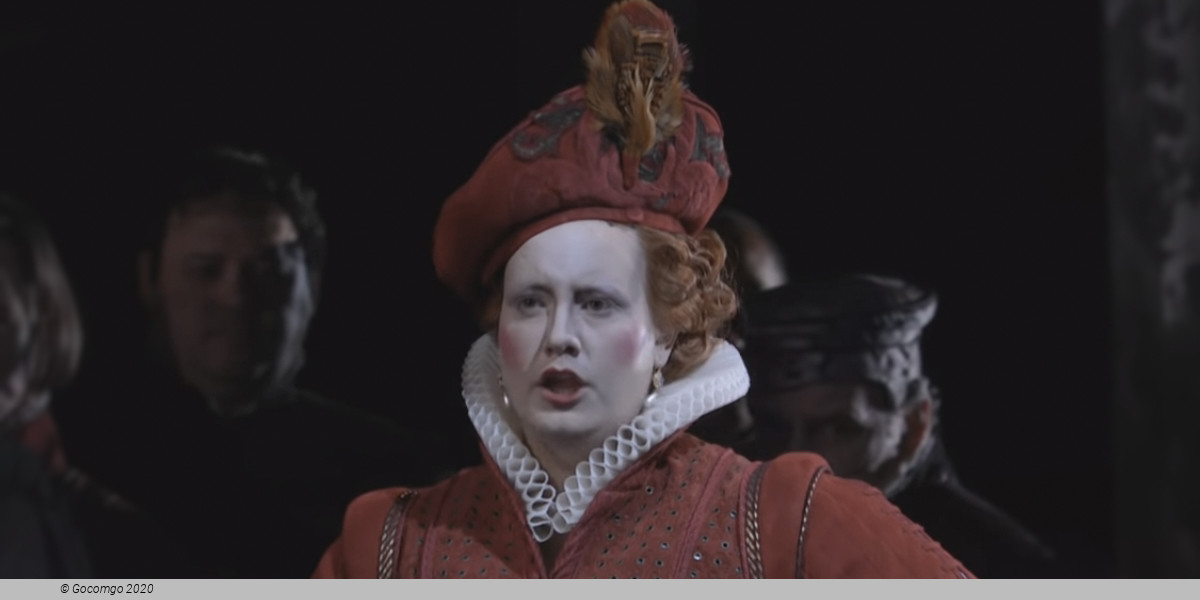
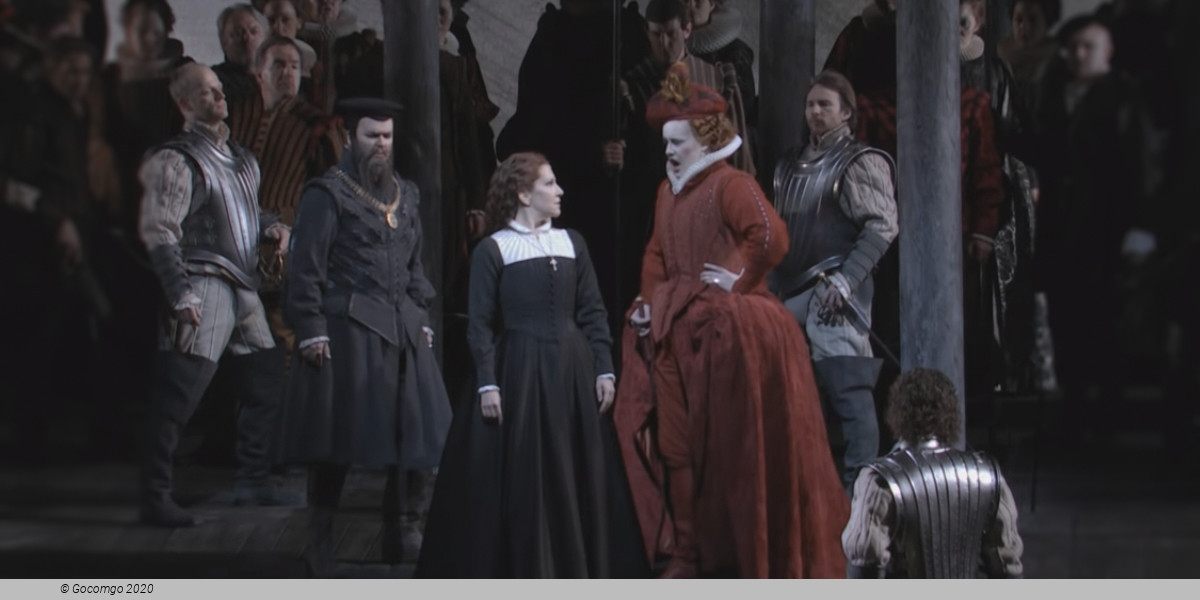
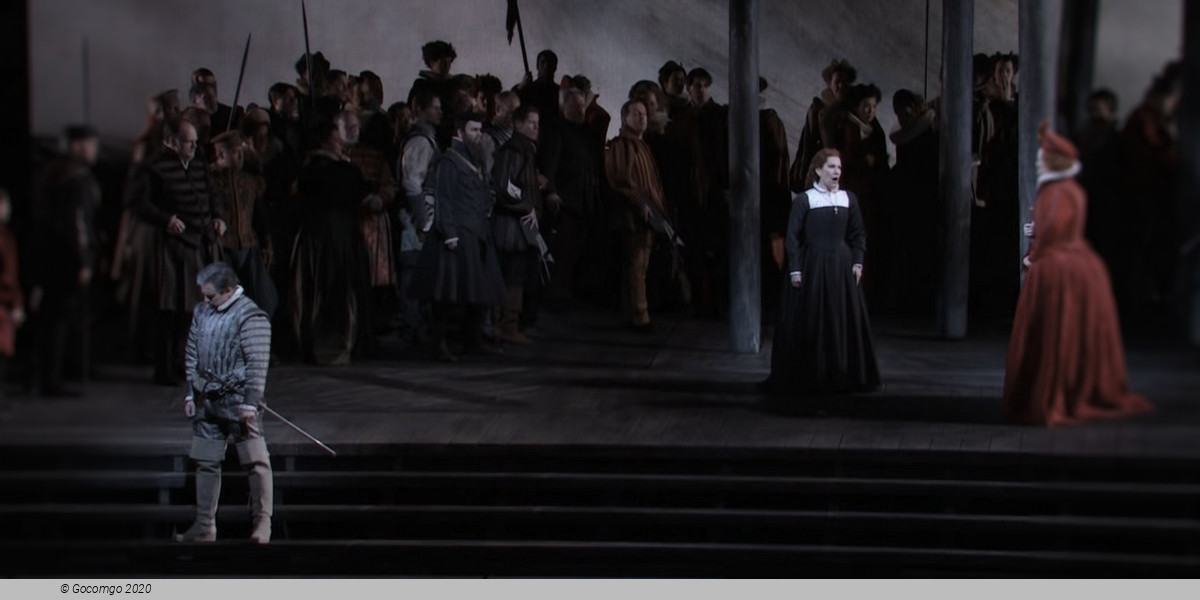
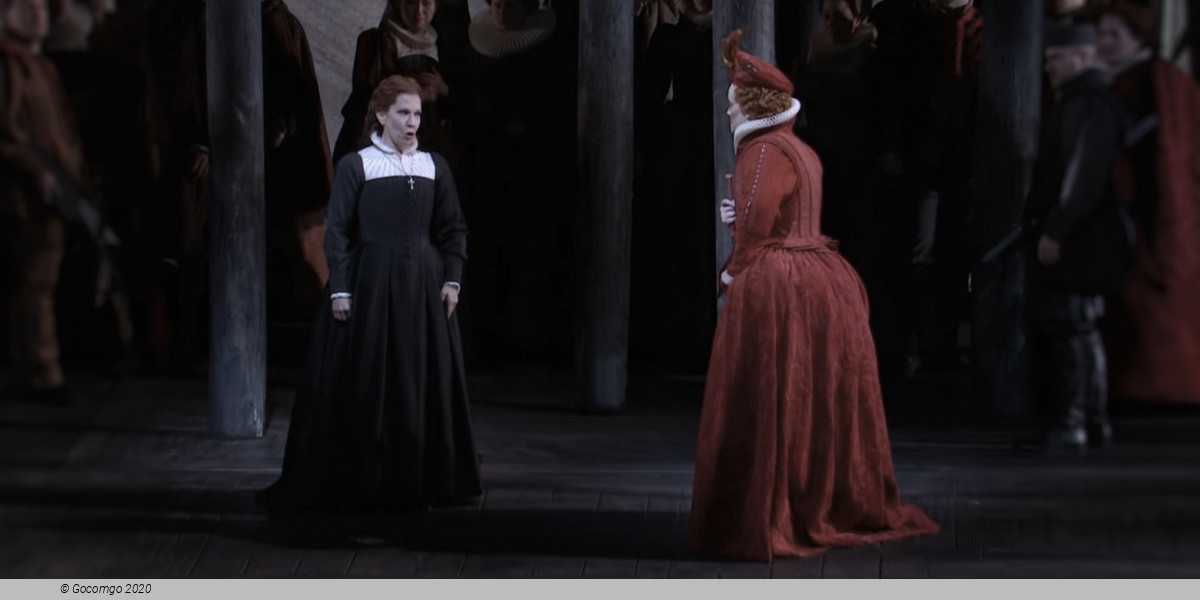
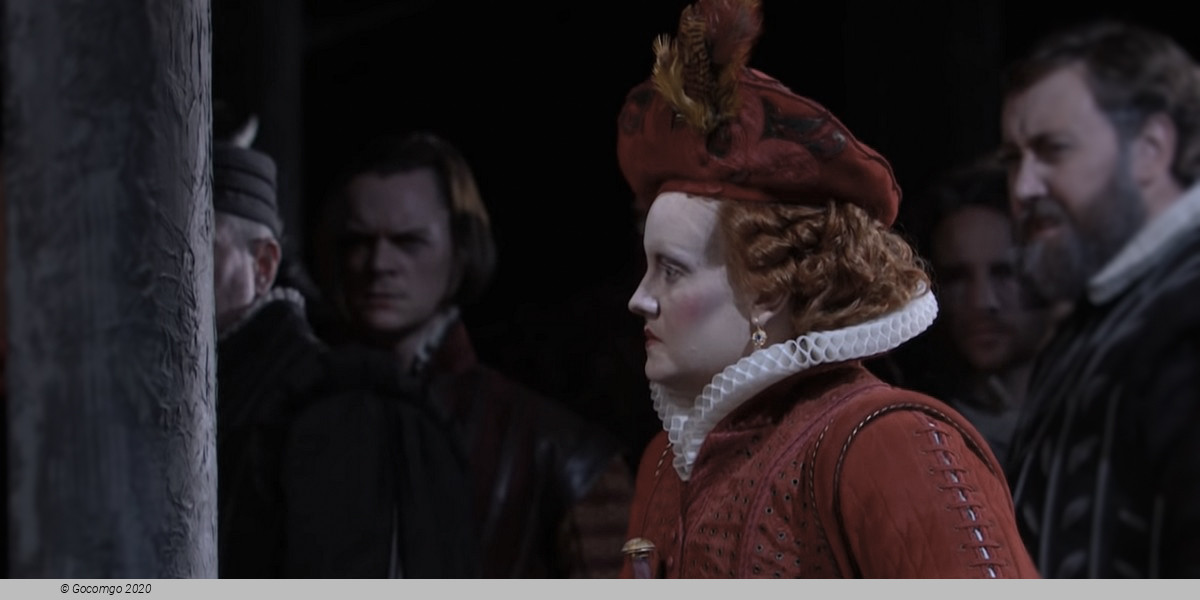
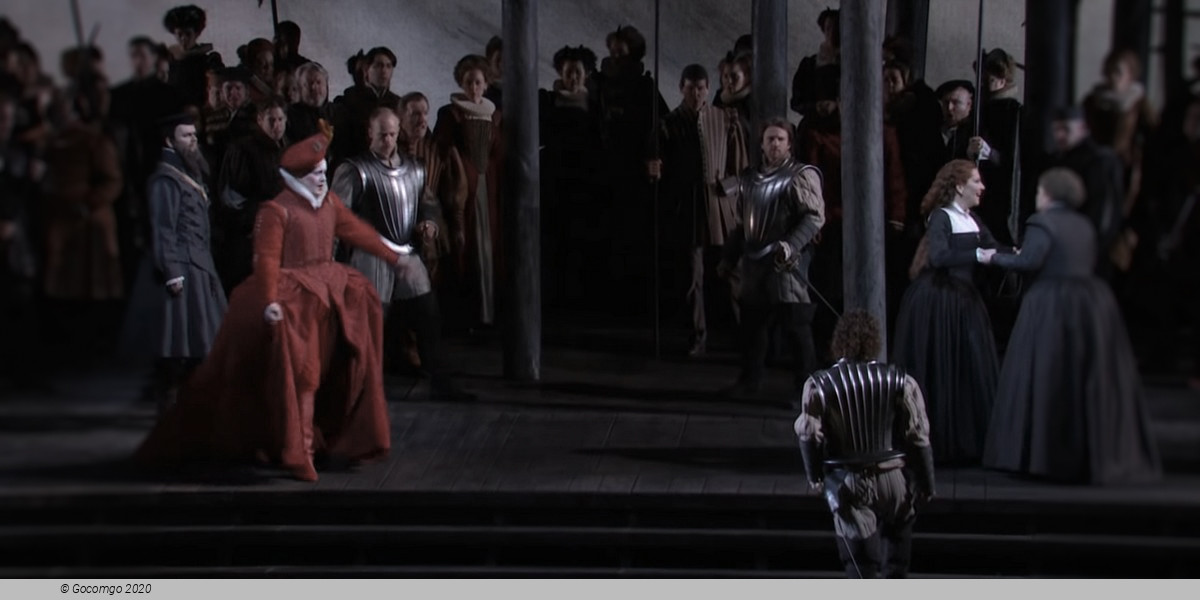
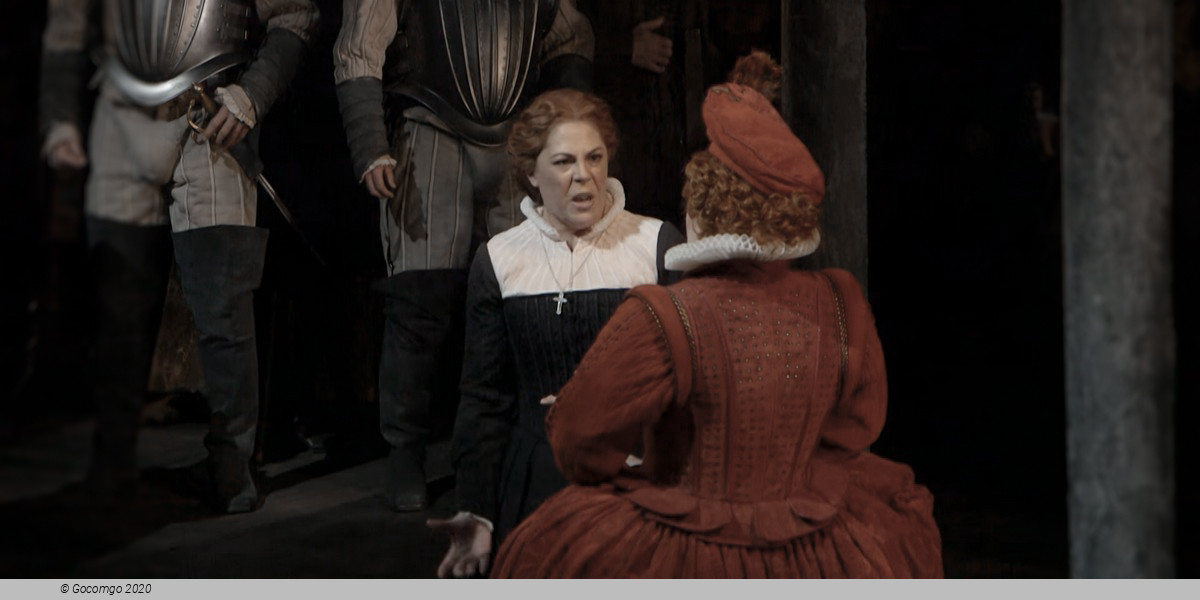
 30 Lincoln Center
30 Lincoln Center